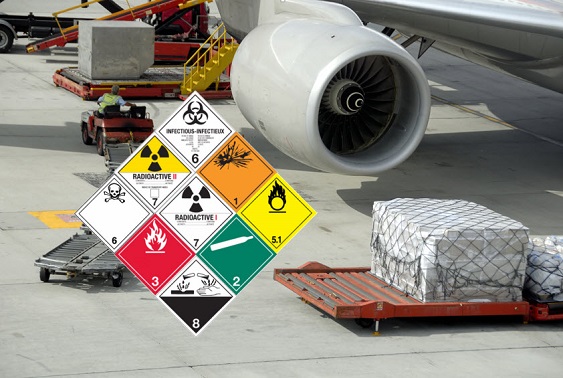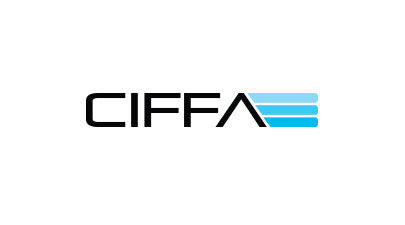CIFFA Exam Sample Practice Questions and Answers – Dangerous Goods

CIFFA Exam Sample Practice Questions and Answers – Dangerous Goods
Questions
- What is the definition of dangerous goods?
- What are two (2) other terms that may also mean dangerous goods?
- What associations/agencies have devised regulations for the transportation of dangerous goods?
- What is the Canadian set of dangerous goods regulations?
- What is the American set of dangerous goods regulations?
- Name some transportation disasters involving dangerous goods.
- For these three (3) activities: handling, offering for transport, transporting dangerous goods; which one(s) could apply to the following persons?
Shipper/exporter/importer:
Freight forwarder:
Carrier:
- What are the two (2) main responsibilities of freight forwarders regarding dangerous goods?
- Under what conditions can a person legally handle, offer for transport, or transport dangerous goods?
- In Canada, how long is a dangerous goods training certificate valid for?
Air mode:
Ground mode:
Ocean mode:
- In Canada, are there any situations when a dangerous goods training certificate would expire in a shorter period than in Question 10?
- In Canada, who must sign a dangerous goods training certificate to make it valid?
- In Canada, who must sign a dangerous goods training certificate to make it valid?
- In Canada, who must sign a dangerous goods training certificate to make it valid?
- In Canada, who must sign a dangerous goods training certificate to make it valid?
- What are the nine (9) Classes/Divisions of dangerous goods?
Class 1:
Class 2:
Class 3:
Class 4:
Class 5:
Class 6:
Class 7:
Class 8:
Class 9:
- What are the three (3) Packing Groups, and what do they relate to?
- What are the three (3) Packing Groups, and what do they relate to?
i) Packing Group I:
ii) Packing Group II:
iii) Packing Group III:
- Other than the “diamond-shaped” hazard labels, what other labels/marks are there for the transportation of dangerous goods by air?
- Other than the “diamond-shaped” hazard labels, what other labels/marks/signs/placards are there for the transportation of dangerous goods by ocean?
- What are the four (4) types of documents that may be used for dangerous goods shipments?
- Who is responsible to complete the above documents?
- In Canada, what additional two (2) pieces of information must be indicated on the transport document for dangerous goods?
- What are the five (5) BASIC steps to follow during a dangerous goods emergency?
- Who/what is CANUTEC?
- How do you contact CANUTEC during a dangerous goods emergency?
- What two (2) reports may you have to make to Transport Canada regarding a dangerous goods occurrence?
- If found guilty of an offence under the TDGR, what punishment could be levied?
- Review the following excerpt from the International Air Transport Association’s (IATA) Dangerous Goods Regulations and answer the following questions:
- Review the following excerpt from the International Air Transport Association’s (IATA) Dangerous Goods Regulations and answer the following questions:
- What details can you provide about Acetylene silver nitrate?
- Review the following excerpt from the International Maritime Organization’s (IMO) Dangerous Goods Code and answer the following questions:
- What details can you provide about UN1219?
- What details can you provide about UN1463?
Answers
- What is the definition of dangerous goods?
Articles and substances capable of posing a significant risk to health, safety, property, or the environment.
- What are two (2) other terms that may also mean dangerous goods?
Hazardous materials; restricted articles.
- What associations/agencies have devised regulations for the transportation of dangerous goods?
United Nations (UN);
International Atomic Energy Agency (IAEA);
International Civil Aviation Organization (ICAO);
International Air Transport Association (IATA);
International Maritime Organization (IMO).
- What is the Canadian set of dangerous goods regulations?
Canadian Transportation of Dangerous Goods Regulations (TDGR).
- What is the American set of dangerous goods regulations?
Title 49 of the Code of Federal Regulations (49 CFR).
- Name some transportation disasters involving dangerous goods.
- ValuJet air crash;
- Mont Blanc/Halifax explosion;
- Bow Mariner explosion and sinking;
- Mississauga train derailment;
- Kapitan Sakharov;
- Malaysian Airlines.
- For these three (3) activities: handling, offering for transport, transporting dangerous goods – which one(s) could apply to the following persons?
Shipper/exporter/importer: handling, offering for transport, transporting.
Freight forwarder: handling, offering for transport, transporting.
Carrier: handling, transporting.
- What are the two (2) main responsibilities of freight forwarders regarding dangerous goods?
Protect the supply chain from undeclared dangerous goods;
Advise the shipper/importer/exporter of the correct procedures to follow and verify that the shipper/importer/exporter has followed the regulations.
- Under what conditions can a person legally handle, offer for transport, or transport dangerous goods?
The person must be adequately trained and hold a training certificate or be in the presence and under the direct supervision of a person who is adequately trained and holds a training certificate.
- In Canada, how long is a dangerous goods training certificate valid for?
Air mode: 24 months
Ground mode: 36 months
Ocean mode: 36 months
- In Canada, are there any situations when a dangerous goods training certificate would expire in a shorter period than as stated in the previous question?
If the regulations applicable to the person’s duties change before the training certificate expires.
- In Canada, who must sign a dangerous goods training certificate to make it valid?
The employer and employee.
- Who is responsible for identification of a dangerous goods shipment?
The shipper/exporter.
- In what two (2) ways are dangerous goods identified?
By Proper Shipping Name and by United Nations (UN) Number or Identification (ID) Number.
- How many Classes of dangerous goods are there, and what do they relate to?
9 Classes; they relate to the type of hazard they represent.
- What are the nine (9) Classes/Divisions of dangerous goods?
Class 1: Explosives
Class 2: Gases
Class 3: Flammable liquids
Class 4: Flammable solids, etc.
Class 5: Oxidizers and organic peroxides
Class 6: Toxic and infectious substances
Class 7: Radioactive material
Class 8: Corrosives
Class 9: Miscellaneous
- What are the three (3) Packing Groups, and what do they relate to?
Packing Groups I, II, and III; they relate to the degree of danger they represent.
- What degree of danger does each Packing Group represent?
Packing Group I: high danger
Packing Group II: medium danger
Packing Group III: low danger
- Other than the diamond-shaped hazard labels, what other labels/marks are there for the transportation of dangerous goods by air?
- Magnetized materials;
- Cryogenic liquids;
- Cargo aircraft only;
- Package orientation;
- Keep away from heat;
- Lithium battery;
- Environmentally hazardous substances mark;
- Limited quantities mark.
- Other than the diamond-shaped hazard labels, what other labels/marks/signs/placards are there for the transportation of dangerous goods by ocean?
- Elevated temperature;
- Marine pollutant;
- Fumigation warning;
- Danger is only used on trucks.
- What are the four (4) types of documents that may be used for dangerous goods shipments?
- IATA Shipper’s Declaration for Dangerous Goods;
- Bill of lading;
- Multimodal Dangerous Goods Form; and
- FIATA Shipper’s Declaration for the Transport of Dangerous Goods.
- Who is responsible to complete the above documents?
The shipper/exporter.
- In Canada, what additional two (2) pieces of information must be indicated on the transport document for dangerous goods?
- 24 hour number (for emergencies); and
- Emergency Response Assistance Plan and Number (if applicable).
- What are the five (5) BASIC steps to follow during a dangerous goods emergency?
- Do not come in contact with any spilled or leaking material.
- Isolate the package.
- Notify your immediate supervisor or manager.
- Notify the appropriate emergency services and CANUTEC.
- Report the accident or incident to Transport Canada.
- Who/what is CANUTEC?
The Canadian Transport Emergency Centre. Part of Transport Canada, and will assist emergency response personnel in dealing with dangerous goods emergencies.
- How do you contact CANUTEC during a dangerous goods emergency?
613-996-6666 (collect) OR *666 (cell phone).
- What two (2) reports may you have to make to Transport Canada regarding the occurrence of a dangerous good?
- An immediate report.
- A written report within 30 days.
- If found guilty of an offence under the TDGR, what punishment could be levied?
- Up to CAN $50,000.00 for the first offence;
- Up to CAN $100,000.00 for each subsequent offence;
- Up to 2 years imprisonment.
- Review the following excerpt from the International Air Transport Association’s (IATA) Dangerous Goods Regulations and answer the following questions:
a) What details can you provide about UN1090?
- United Nations Number UN1090;
- Proper Shipping Name is Acetone;
- It is a Class 3, Flammable liquid;
- It requires a Flammable liquid hazard label;
- It is a Packing Group II;
- EQ code is E2;
- As a limited quantity shipment on a passenger and cargo aircraft, the shipper must use Packing Instruction Y341, with a maximum of 1L per package;
- As a shipment on a passenger and cargo aircraft, the shipper must use Packing Instruction 353, with a maximum of 5 L per package;
- As a shipment on a cargo aircraft only, the shipper must use Packing Instruction 364, with a maximum of 60 L per package;
- There are no Special Provisions; and
- The Emergency Response Guide Code is 3H.
b) What details can you provide about Acetylene silver nitrate?
It is forbidden by air.
- Review the following excerpt from the International Maritime Organization’s (IMO) Dangerous Goods Code and answer the following questions:
a) What details can you provide about UN1219?
- United Nations Number UN1219;
- Proper Shipping Name is Isopropanol (or Isopropyl alcohol);
- It is a Class 3, Flammable liquid;
- It is a Packing Group II;
- There are no Special Provisions;
- In limited quantities, the maximum of 1 L per package;
- For packings (smaller packages), shipper must use Packing Instruction P001, with no provision; and
- For intermediate bulk containers (large containers), the shipper must use Packing Instruction IBC02, with no provisions.
b) What details can you provide about UN1463?
- United Nations Number UN1463;
- Proper Shipping Name is Chromium trioxide anhydrous;
- It is a Class 3, Flammable liquid;
- It has Subsidiary Risks of 6.1, Toxic, and 8, Corrosive;
- It is a Packing Group II;
- There are no Special Provisions;
- In limited quantities, the maximum of 1 kg per package;
- For packagings (smaller packages), shipper must use Packing Instruction P002, with a Provision of PP31; and
- For intermediate bulk containers (large containers), the shipper must use Packing Instruction IBC08, with a Provision of B2/B4.
IATA Dangerous Goods Regulations
| Passenger and Cargo Aircraft | Cargo Aircraft Only | ||||||||||||
| Ltd Qty | |||||||||||||
| UN/ ID no. A | Proper Shipping Name/ Description B | Class or Div. (Sub Risk) C | Hazard Label(s) D | PG E | EQ see 2.7 F | Pkg Inst G | Max Net Qty/Pkg H | Pkg Inst I | Max Net Qty/Pkg J | Pkg Inst K | Max Net Qty/Pkg L | S.P. see 4.4 M | ERG Code N |
| 1090 | Acetone | 3 | Flam. liquid | II | E2 | Y341 | 1 L | 353 | 5 L | 364 | 60 L | 3H |
IMO Dangerous Goods Code
| UN No. (1) | Proper Shipping Name (PSN) (2) | Class or divi- sion (3) | Subsidiary risk(s) (4) | Packing group (5) | Special provisions (6) | Limited quantities (7) | Packing | IBC | ||
| Instruc- tions (8) | Provisions (9) | Instruc-tions (10) | Provisions (11) | |||||||
| 1219 | ISOPROPANOL (ISOPROPYL ALCOHOL) | 3 | – | II | – | 1 l | P001 | – | IBC02 | – |
| 1463 | CHROMIUM TRIOXIDE, ANHYDROUS | 5.1 | 6.1/8 | II | – | 1 kg | P002 | PP31 | IBC08 | B2/B4 |





